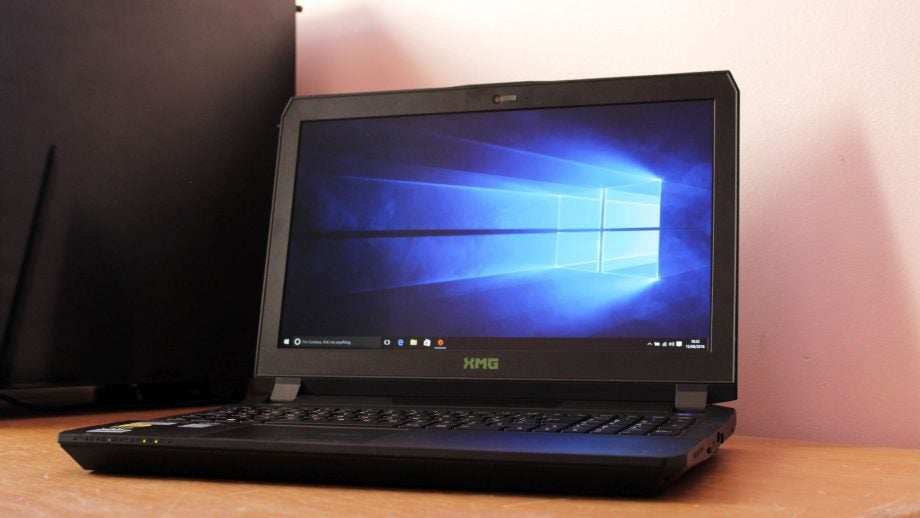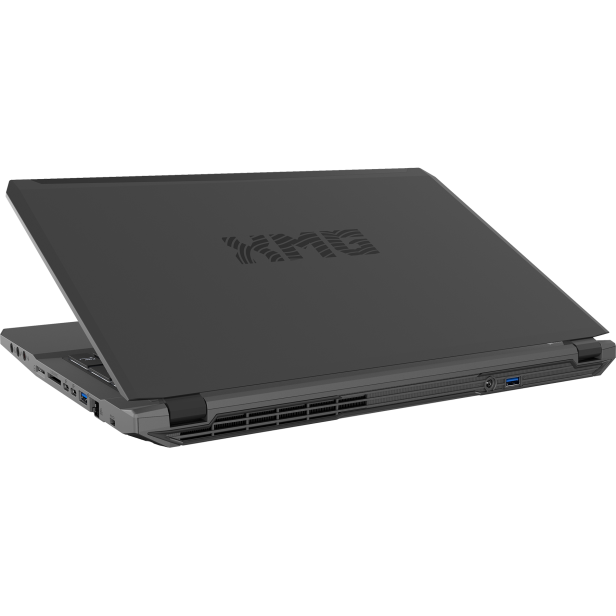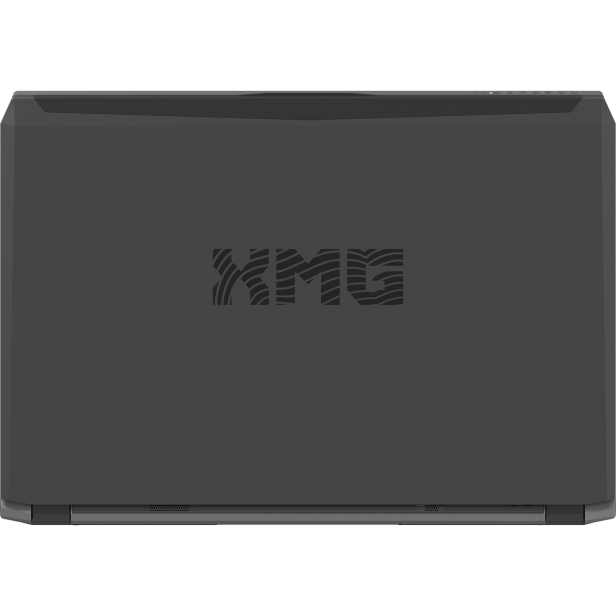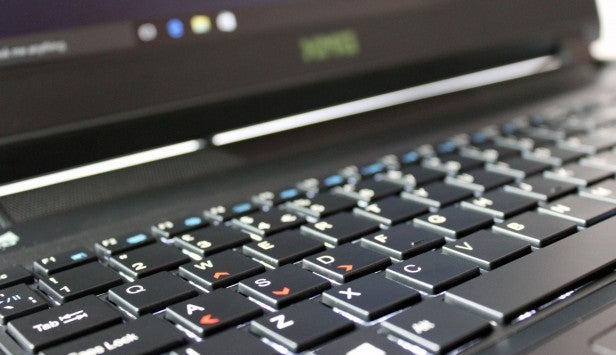XMG P507 Review
XMG P507
Our first Nvidia Pascal laptop review

Sections
- Page 1 XMG P507 Review
- Page 2 Screen, Sound, Keyboard and Trackpad Review
- Page 3 Performance, Battery Life & Verdict Review
Verdict
Pros
- Amazing gaming performance
- Reasonable screen quality
- Loads of connectivity
Cons
- Underwhelming keyboard and trackpad
- Dull design
- Screen should have a higher resolution
Key Specifications
- Review Price: £1951.00
- 2.6GHz Intel Core i7-6700HQ processor
- 8GB Nvidia GeForce GTX 1070
- 15.6-inch 1,920 x 1,080 Nvidia G-Sync screen
- 16GB 2,400MHz DDR4 memory
- 256GB Samsung SM951 M.2 SSD
- 1TB hard disk
- Windows 10 64-bit
- 1-year RTB warranty
What is the XMG P507?
The XMG P507 doesn’t look like much, but its dour exterior conceals one of the world’s most potent laptop GPUs – the new mobile variant of the GTX 1070.
The new GPU uses Nvidia’s stunning Pascal architecture, which delivered huge performance and efficiency improvements on in desktop form. How does it handle the thermal challenges of a laptop? With aplomb.
Video: How to choose a laptop in 2016
Related: Best PC games
XMG P507 – Features
It’s worth taking a second just to explain Nvidia’s naming strategy with its latest line of mobile GPUs – it’s a little confusing.
The GTX 1070 inside this laptop is actually the same part as the desktop card, with the same Pascal architecture – something that’s only now possible because of the huge efficiency gains that Nvidia made with its new hardware. The only differences between the desktop and mobile parts are minor specification changes, which mean that mobile users now get the same high-end, VR-friendly experience as desktop gamers.
Video: Watch our review of the desktop Nvidia GeForce GTX 1070
The GTX 1070 inside this laptop is fearsome. The mobile variant has 2,048 stream processors and a 1,645MHz boost clock, while the desktop card has 1,920 stream processors but a higher clock speed. The mobile core retains the 8GB of GDDR5 memory of its desktop counterpart alongside an 8,000MHz clock speed.
Those specifications blow away the equivalent machines from the previous generation. Since this XMG is the first gaming laptop we’ve reviewed from the current generation, comparisons are hard. For the purposes of this review, I’ll compare it to two laptops from the previous generation: one larger and one smaller. It’s safe to assume that both will be updated with 10-series GPUs shortly.
The larger, 17.3-inch CyberPower Fangbook 4 SK-X17 had a desktop-class GTX 980 that also has 2,048 stream processors, but its peak 1,253MHz speed and 4GB of memory pale in comparison to the GTX 1070. The Gigabyte Aorus X3 Plus V5 had a GTX 970M that has 6GB of memory but only 1,280 stream processors and a 993MHz average boost.
There’s a lot to like about the rest of the XMG’s specification, even if the rest of this machine doesn’t push the envelope. The Core i7-6700HQ is one of Intel’s mobile stalwarts thanks to its four cores, 2.6GHz stock speed and 3.5GHz peak.
There’s the familiar 16GB of DDR4 memory, and storage is divided between a 256GB Samsung SM951 M.2 SSD and a 1TB hard disk.
The screen is pretty conventional: a 15.6-inch model with G-Sync and a 1080p resolution. The former feature eliminates juddering by matching the GPU’s output with the screen’s refresh rate, and it’s a welcome addition – but the 1080p resolution seems odd, as the GTX 1070 can easily handle far more pixels.
Connectivity is good: Gigabit Ethernet, dual-band 802.11ac wireless and Bluetooth on the inside, and three USB 3 ports alongside pairs of USB 3.1 Type-C and Mini DisplayPort connectors around the edges. There are also slots for SD and SIM cards.
As ever, different specifications are available if you don’t need this machine’s level of power. Dropping down to the Nvidia GeForce GTX 1060 reduces the price to £1,609, and the cheapest specification has the GTX 1060 alongside 8GB of single-channel memory, a small hard disk, no SSD and no operating system for a tempting £1,299 including VAT.
Related: Best SSDs to buy
XMG P507 – Design
Little on the outside suggests that this machine is one of the most powerful gaming notebooks on the market.
The P507 is made from aluminium and the lid is decorated with a subtle XMG logo. Ease the 15.6-inch screen back and the interior is just as subtle: there’s a tiny XMG logo beneath the screen and a group of stickers on the wrist-rest, but that’s it.
This is not necessarily a bad thing. The CyberPower and Aorus are much more obvious gaming machines with the former serving up a multi-coloured backlit keyboard and the latter cramming dramatic vents into its 13.3-inch frame.
The XMG weighs in at 2.94kg and is 32mm at its thickest point. That’s comfortably lighter and slimmer than the CyberPower and its 17.3-inch screen, but about a kilo heavier and almost a centimetre thicker than the Aorus. In short, this machine slots right in between the competition, and it’s not so thick and heavy that it’s going to be awkward to carry it around, as long as you don’t plan on actually using it on the move.
Build quality is only middling – a slight disappointment for a laptop that costs nearly £2,000. There aren’t any major issues, but there’s a bit of a give in the wrist-rest and keyboard, and the base panel also exhibits a little weakness. There’s a huge amount of flex in the screen. This doesn’t mean the whole thing’s going to crumble after six months, but it just doesn’t feel as grand as a £2,000 laptop should.
The XMG lends itself to tinkering and upgrading. The base panel pops off easily after a few screws are removed, and the memory, SSD and hard disk are all accessible. The heatpipes and fans are easy to reach, and there’s room for another 2.5-inch hard disk inside, alongside a couple of spare M.2 connectors.
How we test laptops
Unlike other sites, we test every laptop we review thoroughly over an extended period of time. We use industry standard tests to compare features properly. We’ll always tell you what we find. We never, ever, accept money to review a product.


